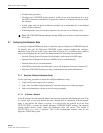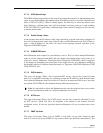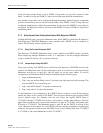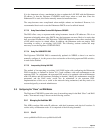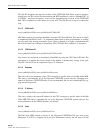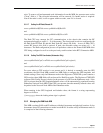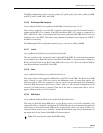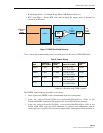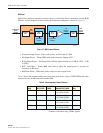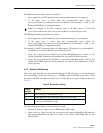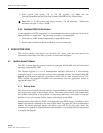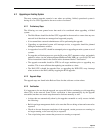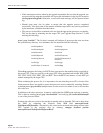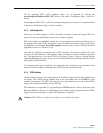
ADCP-75-192 • Issue 2 • June 2007
Page 44
© 2007, ADC Telecommunications, Inc.
3.8.2.10 Setting The GPS Coordinates
transceptRanNodeGpsCoordTable.transceptRanNodeGpsLongitude
and
transceptRanNodeGpsCoordTable.transceptRanNodeGpsLatitude
For cases where a GPS receiver is not present on a given node and it is desired to manually enter
the GPS coordinates, the RAN Node MIB contains two MIB fields to configure the GPS
longitude and latitude settings. The Digivance CXD/NXD software (Hub Config Process)
checks for the presence of a GPS on the RAN nodes - if the GPS is present on a given node, then
the GPS longitude/latitude values for that node will be automatically populated from that RAN's
Network Node MIB. If the GPS is not present, then the manually entered values will be pushed
to the Network Node MIB of that RAN node. When entering in the GPS longitude and latitude
values, the format is a string representing degrees as follows:
(-)xxx.yyyyyy, where the leading minus sign is optional.
3.9 BTS Integration
3.9.1 BTS Validation
Prior to connecting the base station to the Digivance CXD/NXD HUB, the host BTS should be
tested to assure the BTS is operating per the manufacturer’s specification.
3.9.2 Path Balancing
This section defines the procedure for balancing the forward and reverse paths for a given
Tenant Sector.
3.9.2.1 Forward Path Balancing
There are two ways to interface the forward signals into the CXD/NXD Hub, via the BIM or to
the FBHDC directly. This section describes the balancing of each.
FBHDC Input
A direct input to the FBHDC is possible when the composite level of the input signals is -4dBm
or less and the forward signals are non-duplexed. A block diagram of the forward path
balancing components is shown in Figure 11.
• Composite Input Power – Sum of all carriers, no more than -4 dBm.
• PA Output Power – Tenant MIB value used to measure Output of PA.
Note: When adjusting power and attenuator levels in the Digivance CXD/NXD MIBs,
values are represented in 0.1 dB increments (e.g. –100 indicates –10.0 dBm).



